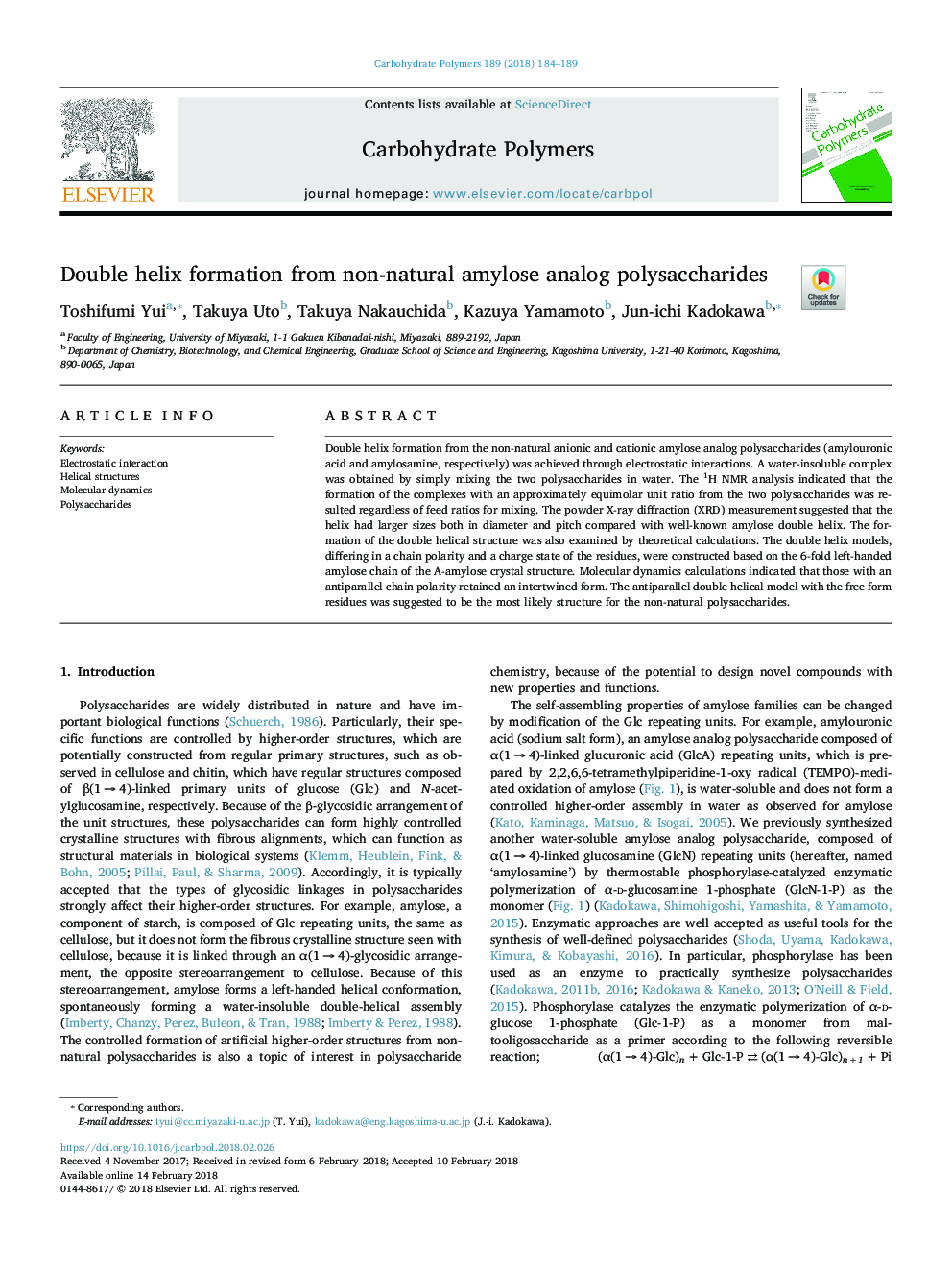| Article ID | Journal | Published Year | Pages | File Type |
|---|---|---|---|---|
| 7783201 | Carbohydrate Polymers | 2018 | 6 Pages |
Abstract
Double helix formation from the non-natural anionic and cationic amylose analog polysaccharides (amylouronic acid and amylosamine, respectively) was achieved through electrostatic interactions. A water-insoluble complex was obtained by simply mixing the two polysaccharides in water. The 1H NMR analysis indicated that the formation of the complexes with an approximately equimolar unit ratio from the two polysaccharides was resulted regardless of feed ratios for mixing. The powder X-ray diffraction (XRD) measurement suggested that the helix had larger sizes both in diameter and pitch compared with well-known amylose double helix. The formation of the double helical structure was also examined by theoretical calculations. The double helix models, differing in a chain polarity and a charge state of the residues, were constructed based on the 6-fold left-handed amylose chain of the A-amylose crystal structure. Molecular dynamics calculations indicated that those with an antiparallel chain polarity retained an intertwined form. The antiparallel double helical model with the free form residues was suggested to be the most likely structure for the non-natural polysaccharides.
Related Topics
Physical Sciences and Engineering
Chemistry
Organic Chemistry
Authors
Toshifumi Yui, Takuya Uto, Takuya Nakauchida, Kazuya Yamamoto, Jun-ichi Kadokawa,
